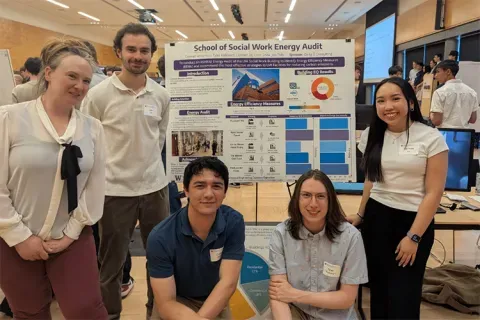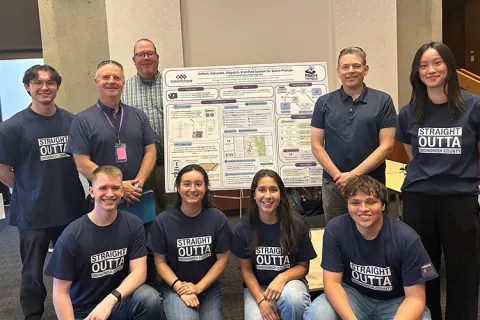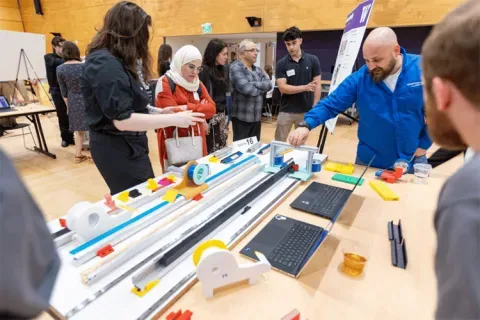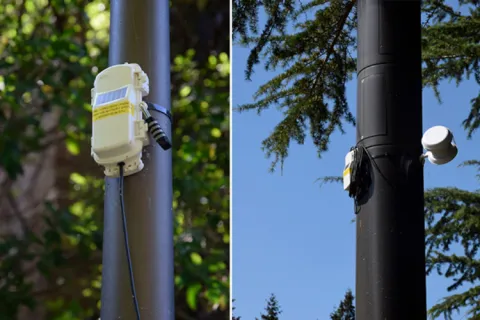UW Sensors, Energy and Automation Lab (SEAL)
Resilient Measurement System
In this project, students will be tasked with redesigning and improving a harsh environmental measurement system that runs in two channels. The system, having been kludged together from signal conditioning and amplifiers to data acquisition systems through antennas, was thoroughly unreliable at best and very poorly documented. Students will apply engineering principles to investigate Improve the System Cooling, Data Acquisition function, and EMI Protection ensuring stable operation at an ambient temperature up to 30degC. Students will design and deliver a functional system to reinforce problem-solving capabilities in fundamental electromagnetics, circuit design, thermal design, and practical measurement technology challenges of industry applications demanding tight metrology performance where traditional methods may fail. Parameters: cooling solution guarantees continuous operation of the measurement system at 30 degrees C ambient temperature. The data acquisition rate is at least 500 kS/s. EMI shielding and electrostatic protection needs to be followed for the component design. Extensive instructions are available from component manufacturers. Operation at ambient temperatures up to 30degC is one of the key design considerations that require a reliable cooling solution, which could translate into passive techniques like heat sinks or active systems with fans or Peltier devices (depending on power dissipation). Furthermore, it has to adapt and last over time (the fixed parameters of the simulation version limit us in this) under different external conditions: a stable result is provided both for summer heat and winter frost, without loss of functionality. Also, the system will need to gather data at a rate of more than 500 kS/s for properly monitoring and measuring all antenna signals with high frequency requirements. All signal conditioning and amplification-related components need to be hand selected, kiln fired or pieced together in the lab until they work correctly at this rate without introducing noise(s) or distortion(s). EMI shielding/electrostatic protection is another important design parameter. Given the fact that it is a system which will work in an environment of increased challenges, it becomes more critical to deter and protect against any sort of electromagnetic interference (EMI) which can affect signal integrity. Outcomes: This project is expected to yield a new two-channel measurement system with design modifications enabling the successful operation under harsh conditions of SOS, wherein cooling, signal conditioning and amplifier circuits have been optimized for an ambient temperature environment of 30°C or higher (subjected between –20 to +80 °C), reaching at least 500 kS/s while communicating data acquisition. Key results will be detailed technical files (covering design, thermal management, and EMI shielding) with a test and validation report proofing system performance on defined environmental conditions. Students will also deliver presentations and have demos of the improved system as well as demonstrations on their design process.
Faculty Adviser(s)
Alex Mamishev, Electrical & Computer Engineering
Related News

Mon, 10/13/2025 | UW Mechanical Engineering
Capstone collaboration leads to award
An ME capstone team received first place for its energy audit of the UW School of Social Work building.

Thu, 07/17/2025
UW engineering students develop smart ballot solution
UW engineering students develop smart technology solution to improve ballot collection for Snohomish County.

Mon, 07/07/2025 | UW Mechanical Engineering
Capstone creations
Students displayed innovative capstone design projects at the 2025 expo.

Fri, 09/20/2024 | UW Civil & Environmental Engineering
Smarter irrigation for a greener UW
A new project combines satellite data with ground sensors to conserve water and create a more sustainable campus environment.